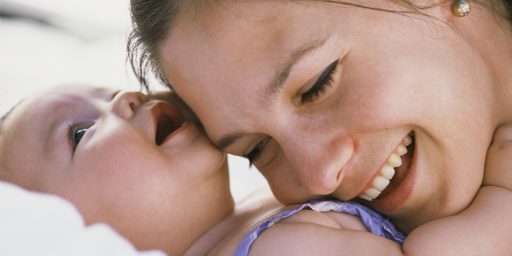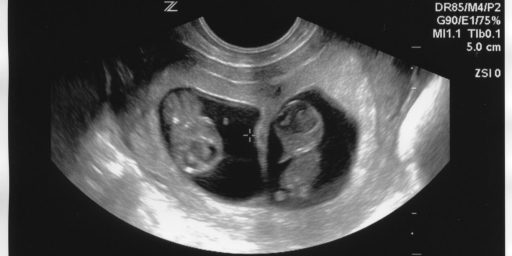There Are A Lot More Twins Out There
Alexis Madrigal notes that there are more twins being born today than there used to be:
From about 1915, when the statistical record begins, until 1980, about one in every 50 babies born was a twin, a rate of 2 percent.
Then, the rate began to increase: by 1995, it was 2.5 percent. The rate surpassed 3 percent in 2001 and hit 3.3 percent in 2010. Now, one out of every 30 babies born is a twin.
That’s a lot of “extra” twins above the 1980 baseline, but how many?
When the CDC calculated the number through 2009, they pegged it at 865,000. Now that several years more data is available, I recalculated the number. I took the number of twins that would have been born if the 1980 twin rate had held, and subtracted it from how many twins were actually born.
The result: 1,009,337! That’s a million extra twins from 1981 through 2012, the most recent year for which data is available.
The question, obviously, is what’s causing this increase. As it turns out, we are:
Older women tend to have more twins than younger women—and older women are having more of the nation’s babies. The researchers found this demographic phenomenon accounted for one-third of the increase.
They attributed the rest of it to the increase in infertility treatments, specifically in-vitro fertilization and “ovulation stimulation medications.”
The number does appear to be leveling off in recent years, and that seems to be largely attributable to the fact that IVF techniques are becoming more and more sophisticated, which means that doctors are implanting fewer and fewer embryos during each IVF cycle. The fewer embroys implanted, the lower the odds of multiple births. In time, then one expects that the number of twin births will level off as these techniques become more sophisticated, although they will likely remain at a higher rate than they were before the time that artificial insemination techniques became standard.






One would think there would be a distinct evolutionary pressure towards having more twins as well. In the past this might have been offset by the resulting smaller babies being more likely to die in infancy, but as infant mortality has plummeted, something that doubles your rate of reproduction is a distinctive advantage.
@Stormy Dragon:
That is likely a factor as well, but helped along by the IVF thing.
Of course, the vast majority of twins born via IVF are probably fraternal rather than identical twins, at least that’s what I’m assuming
I have fraternal twins, my sister has fraternal triplets, both without IVF, and in my case any interventions at all. Fraternals are about 65% of the twin population, that number predates IVF I believe.
@Stormy Dragon: That’s an interesting thought, but I’m not too convinced that current human reproduction has much to do with evolution and vice versa.
@Franklin: there might be something in our evolutionary history that makes it more likely to have twins the later in life one is pregnant, but tend to think it probably has more to do with IVF resulting in twins, triplets, etc. Though it could be a combination of those things. Sounds like an interesting research topic.
Memory has it that people who look at such things figured out about fifty years ago that one pregnancy in 44 involved multiple offspring — twins, triplets, octuplets, etc. So not much has changed. Yet.
What has changed is that in modern, large societies, mulitple birth children are more likely to survive. They aren’t contending with each other for millk and food. They aren’t being killed by superstitious neighbors who worry about “two bodies with one soul.”. And such children are apparently more likely to sire multiple offspring themselves or have children who are more likely to give birth to multiple offspring. I.e., “Twins runs in families.”
So it’s a reasonable bet that the “natural” rate of multiple births in humans is above that one in 44 figure. and we shouldn’t be surprised to see it rise. (FWIW, a 150 years ago sheep generally had one lamb per pregnancy. A fellow named Alexander Graham Bell — yes, the telephone guy — used selective breeding to produce sheep which routinely had twin offspring, and most of the world’s sheep these days are born as twins. What’s “natural” is rather flexible, in other words.)